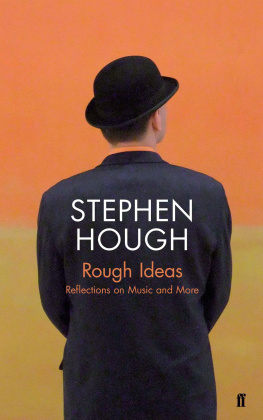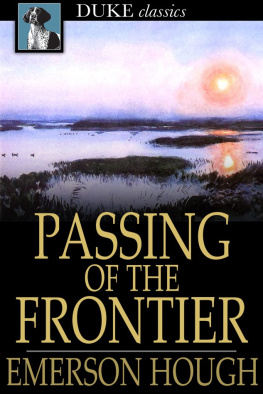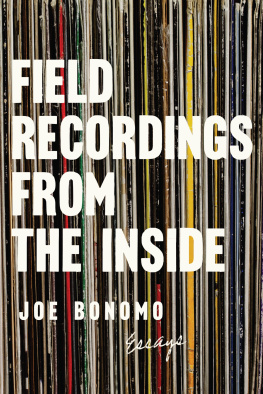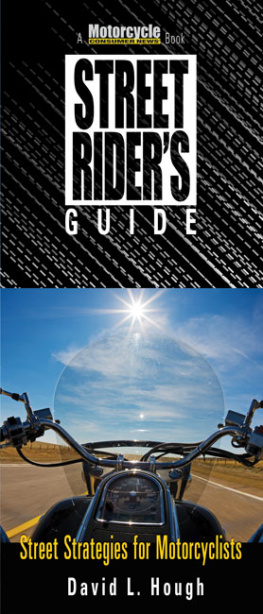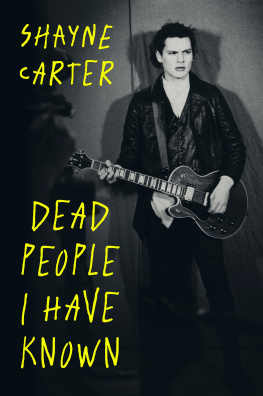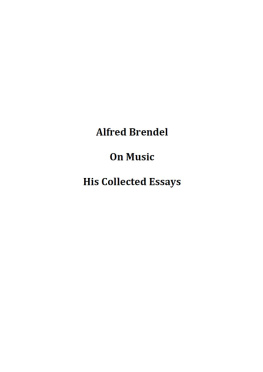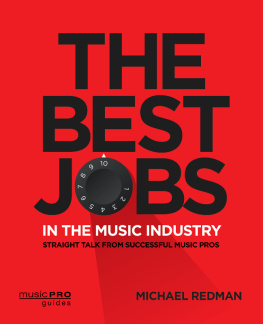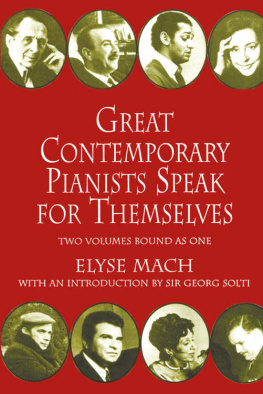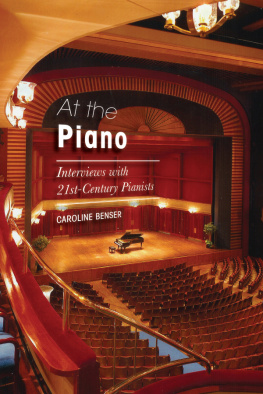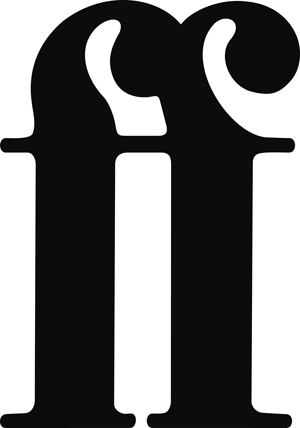Give me a rough idea not as in a deliberately coarse or unformed one, rather one that has a beginning but not yet an end.
I spend a lot of my life sitting around at airports, on planes, in hotel rooms and most of this book expands notes I have made during that dead time on the road. Many of these jottings found their way into print, on paper or online, but others remained unfinished musings on scraps of paper or saved as files on the go on my iPhone: seeds, saplings, waiting to be planted or repotted or pruned.
Mostly Ive written about music and the life of a musician (not always the same thing), from exploring the broader aspects of what it is to walk out onto a stage or to make a recording to specialist tips from deep inside the practice room: how to trill, how to pedal, how to practise. Other subjects appear too, people Ive known, places Ive travelled to, books Ive read, paintings Ive seen. Even religion is there: the possibility of the existence of God, problems with some biblical texts and the challenge involved in being a gay Catholic, and abortion. Ive placed these reflections in a separate section so that readers allergic to such matters can avoid them and we can remain friends.
Hough: rhymes with rough.
The Soul of Music
Great buildings catch the eye but great concert halls must catch the ear too and not just as spaces in which to hear music. Rather they are meant to be musical instruments, their walls and ceilings and floors catching, mixing, projecting the vibrations, transporting them through the air to the ear. A fine acoustic does not just make the music created onstage sound better; it is part of the creative process itself. When I strike a chord, what I hear instantly affects how I will play the next chord. Pianists do not press down predetermined keys with predetermined weight; we spin plates of sound in the air, reacting with split-second reflex to their curve and quiver. Adjustments of pedalling and nuance, of rhythmic flexibility or rigidity, are as constant as the dart and dance of a juggler. We play a hall more than play in a hall.
Wigmore Street is a rather dull thoroughfare. Its buildings tend to be respectable and predictable. Above the shopfronts are offices with politely yawning windows, and the cheerful if not exactly cheap restaurants seem tolerated rather than celebrated. But then we reach number 36. Another shopfront it might seem, but no. Wigmore Streets mediocre Victoriana has lightened. There is a twinkle in the eye as you notice a glass awning. This crystal umbrella is more than a protection against occasional rain. To build with glass is architectural liberation, and to stand safely covered yet still under open skies is a form of ecstasy.
There are no bright lights outside number 36, nothing to distract ones continuing amble towards John Lewis or Selfridges. Just, on both the east and west side of this glass awning, stencilled letters spelling WIGMORE HALL in one of the Arts and Crafts movements more sober fonts. Now you know that you are standing outside a building that has resonated with music for over a hundred years.
Passing through the swinging wooden doors, inset with polished brass panels on which is also stencilled the name of the hall, you step into the outer lobby, a funnel through which all patrons pour. At the end of this corridor is the box office. A small window, as if from a country cottage lacking only a rambling rose, appears at waist level on the left. As you walk towards it only a hand is intermittently visible, dispensing envelopes containing tickets. Its hard to see who owns the hand, even as one reaches the aperture, for to see the face of the owner of the hand requires a rather undignified bending down, in the hope that your name is on the list, that your ticket is safely reserved, that youve come on the correct evening. To the right of the window is a door where a man in evening dress is usually found leaning. This is someone who can override the authority of the armless hand, someone who can make sure that reservations are honoured and that honoured guests are admitted with no reservations. Often the door appears empty until the final approach when a slim figure sidles out, smiling, knowing. He holds an envelope in his hand. The exchange is made. Youre in.
Immediately past this door to the left is a staircase going up, leading to the halls small balcony, which contains a mere 78 seats. Ive sat up there a number of times and it has excellent acoustics and sight lines but it somehow has the feeling of last-minute admission, as if downstairs were oversold or you arrived late or there was a mix-up at the secret window. Or maybe its the opposite, and this is the place for that special guest of the performer, or that celebrity who wants to remain incognito, or that jaded music professional who wants an easy exit in the event of a tedious evening. If a concert has not sold well, a fat, red rope hangs at the bottom of the stairs, blocking entry.
After the staircase there is a choice: left or right. Two doors leading into the holy of holies; no other way inside for the public in this small auditorium. Even if Im sitting on the left side I nearly always enter by the right door, which is directly ahead of the street entrance. To enter by the left door, at the top of the basement staircase, suggests you have been loitering, or were in the loo, or were gulping down a gin and tonic in the bar. To go down to the bar during the interval is to be sociable; to go down there before the concert is to be available.
And so to your seat: red velvet; straight back and sides. A hand in the gap and a gentle push down. Not too comfortable, so you can focus and concentrate on the music; not too uncomfortable, so you can focus and concentrate on the music for a long time. Glance around to see if you know anyone. Oh lovely, theres so-and-so. Oh dear, theres so-and-so. Turn back and look down. Thank goodness you bought that substantial programme book.
The stage is the centre of Wigmore Hall, its raison dtre and point of focus. It is also the dividing line between front of house and backstage. A concert is theatre costumes, lighting, choreography and its habits are not just thoughtless tradition. These customs can be the best preparation for the drama of the music to unfold a reason, too, why we set aside special places for our concerts. As with churches, we use a separate building for this activity partly because we want to create a sacred space. A concert is a feast, a liturgy a party even. It can be bad, but it should never be drab or routine.
In 1899 the British architect Thomas Edward Collcutt, having finished Britains first luxury hotel, the Savoy, just over ten years earlier, was commissioned to design Wigmore Hall. It was his only concert hall. From the mid-twentieth century onwards acousticians emerged as a separate breed, commissioned by an architect to take his or her visual design and set it to music scientists of sound. In earlier times the architect worked with the eye and hoped the ear would follow. It all appears to have been a matter of chance and tradition and the shoebox.
This rectangular shape was traditionally used for concert buildings, the stage a heel at one end. And size didnt matter too much. As long as the proportions were right it would work. It has something to do with walls as arms embracing vibrations, enabling sound to be projected but contained. Wigmores shoebox is small (a slipper fit for Cinderella herself), with every sound beautifully focused. Materials are important: wood is warm, to the touch and to the ear. Wigmores stage is a curved cradle of wood, but out in the 545-seat auditorium are the heavier, grander materials of alabaster and marble. Indeed, despite its birth in the era of art nouveau, Wigmore Hall harks back to the Renaissance in style. There are candle sconces on the walls, and if altars were to project out between the flattened, pink-veined pillars, and oil paintings depicting the life of Christ or of the saints were to be hung above those altars, we might easily be in the private chapel of a minor Italian duke. But no, this is a solidly secular space. Indeed, the only iconography is the famous cupola above the stage, an exuberantly colourful mural entitled

